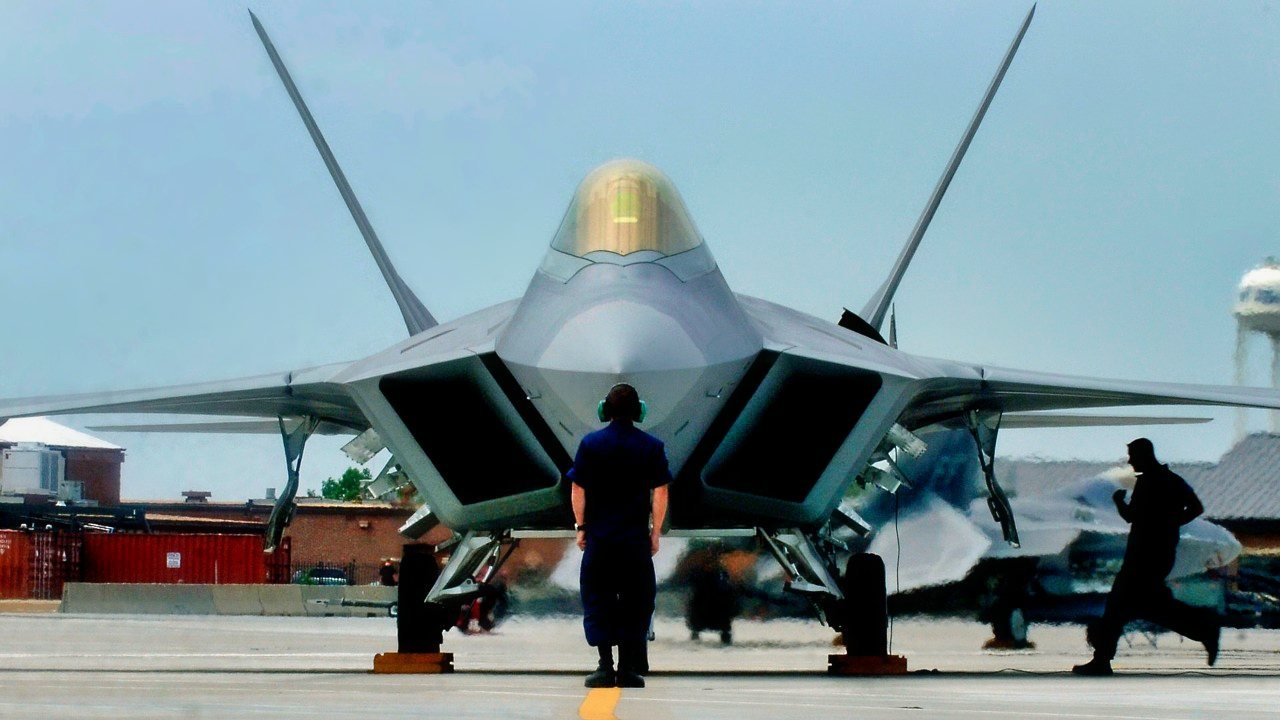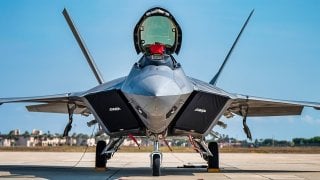The U.S. Military's F-22 Raptor Fighter Nightmare Is Just Getting Started
The F-22 Raptor remains the most advanced fifth-generation air superiority fighter, despite being developed three decades ago to counter the Soviet threat. And the U.S. military just doesn't have enough of them.
Summary: The F-22 Raptor remains the most advanced fifth-generation air superiority fighter, despite being developed three decades ago to counter the Soviet threat. Today's diverse global threats have not diminished its status.
-However, its continuation is threatened by financial decisions, notably the Obama Administration's 2009 decision to end its production. This has restricted the fleet's size significantly.
-With escalating tensions involving major powers like Russia and China, experts argue for restarting its production line and expanding its availability to allies to maintain U.S. air dominance and ensure national security in a rapidly changing world.
Reviving the F-22: A Strategic Imperative for U.S. Air Superiority
The F-22A Raptor may be 30 years old but it remains the most advanced air superiority fighter in the world. A fifth-generation warplane, the Raptor is the pinnacle of modern aviation engineering. It was designed to replace most of the Air Force’s current fleet of fourth-generation planes. US engineers crafted the plane back in the 1980s, when the Soviet Union was the greatest threat to the United States.
Today, however, the threats are far more variegated than they’ve ever been. Despite the changes the world system has endured and chaos that has erupted since the dawn of the 21st century, this warplane remains the cream-of-the-crop.
Yet, until Congress put their foot down with the Air Force a year ago, the Pentagon was readying to retire this plane. The Air Force has argued it was far too expensive to maintain and that those funds could be spent on more sophisticated systems, like the Next-Generation Air Dominance (NGAD) fighter, which is a sixth-generation system designed to replace America’s fifth-generation warplanes (the F-22 as well as the F-35 Lightning II) in the next decade.
F-22 Raptor: Air Force’s Priorities are Misaligned
The Air Force prefers to spend those funds on the F-35, which has become the Air Force’s primary warplane ever since the bean counters got former President Barack Obama and Congress to terminate the production line for the F-22 in 2009.
Now, the Air Force argues that restarting the production line would be needlessly costly. This, from an organization that is spending more money on the F-15EX Eagle II, a supped-up fourth-generation warplane which is a cool bird but nowhere near as advanced as the F-35 or the F-22, than it is spending on the F-35.
This indicates a clear lack of vision for where the Air Force’s leaders—and certainly the elected leadership of the United States—want to take the Air Force in a dynamic strategic environment.
The F-22A Raptor remains the best fifth-generation warplane on the planet. It is second-to-none. Even the Russian and Chinese knock-off versions of this plane, while lethal, lack the sophistication of these birds.
The problem facing the F-22 is not lack of advancement or lethality.
It is a lack of funding.
Because of the Obama Administration’s short-sighted decision to terminate the F-22 production line in 2009, when the F-22 program was at the peak of its lifespan, it set the program back and likely damaged US national security. Now, there is a finite number of F-22s in America’s air fleet and, unless Congress reverses course, even if the Air Force does not retire its F-22 fighters, there are still dangerously low number of these systems available (with no spares on hand).
Rather than trying to reinvent the wheel with the NGAD project, or blowing money on a supped-up version of the fourth-generation warplane, such as the F-15, the Air Force must prioritize restoring the F-22’s production line so as to build more units.
China and Russia are near-peer rivals. The United States is already in a dangerous proxy war with Russia over Ukraine that could devolve into a direct war at any moment.
What’s more, China is likely readying to invade Taiwan sooner than later. These rivals possess weapons systems and tactics that can threat US military forces in ways that the terrorists America has spent the last 20 years fighting could never hope to.
In every wargame scenario that has been run over the last few years, whenever even a pair of F-22 Raptors are introduced into the hypothetical combat situation, the advantages immediately shift over to the US side. Just imagine if we could restart the production line and add onto our existing fleet of F-22s.

The original plan by the Air Force in the 1990s was to have a fleet of about 750 F-22s.
The Air Force never even got to one-third of that planned number when the Obama Administration scuttled the production line for the great warbird.
Restart the F-22’s Production Line
It will be an onerous cost to restart the production line. But it is worth it. Plus, Congress should drop its restriction on selling the F-22 to foreign allies. One of the reasons the F-35 has become more affordable over the last decade is because it is a warplane that the US Air Force, Navy, and Marines use.
More importantly, though, more than a dozen allied nations use the bird as well.
The US Navy should build an aircraft carrier-version of the F-22 while primary allies, such as Britain and Israel, are allowed to buy the F-22. By garnering foreign investment in the F-22 program, as the F-35 program has proven, costs can be reduced while interoperability is enhanced.
All this will redound to the ultimate strategic benefit of the United States. But time is running out. Washington must move quickly to restart the F-22 production line, get the other branches—notably the Navy—to build their own version of the F-22, while getting some of America’s closest allies to invest in the program to lower costs.
The absolute wrong move, however, is to start retiring these birds or simply keep the program where it is.
Once the shooting starts, America will need all the F-22 Raptors it can get.
About the Author
Brandon J. Weichert, a National Interest national security analyst, is a former Congressional staffer and geopolitical analyst who is a contributor at The Washington Times, the Asia Times, and The-Pipeline. He is the author of Winning Space: How America Remains a Superpower, Biohacked: China’s Race to Control Life, and The Shadow War: Iran’s Quest for Supremacy. His next book, A Disaster of Our Own Making: How the West Lost Ukraine, is due October 22 from Encounter Books. Weichert can be followed via Twitter @WeTheBrandon.


